THE VALENCIA BIOPARC
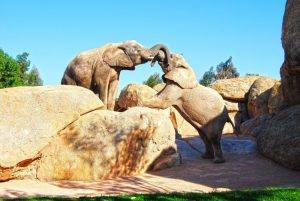 The Bioparc is Valencia’s innovative and ground-breaking new zoological park, set in the Parque de Cabecera, a 200,000m2 spread of luscious green from which the Turia River park stems and runs right through Valencia all the way to the City of Arts and Sciences, making it one of the greenest cities in Europe along with all its leafy avenues.
The Bioparc is Valencia’s innovative and ground-breaking new zoological park, set in the Parque de Cabecera, a 200,000m2 spread of luscious green from which the Turia River park stems and runs right through Valencia all the way to the City of Arts and Sciences, making it one of the greenest cities in Europe along with all its leafy avenues.
The Parque de Cabecera has undergone a huge overhaul in the past few years, and now has a boating lake complete with swan-shaped pedalos, a lovely chiringuito-style bar called Wicky and plenty of open grassy space, all supported by beautiful dry stone walls.
It is the perfect setting to house this amazing new project, unique in the world in its state-of-the-art installations and new philosophies on wild animal care and conservation-zoo-immersion.
The visitor is literally immersed in the Bioparc, free to observe the animals and wildlife in an environment that is the closest possible to their natural habitat. There are few or no barriers and do not expect to see cages or bars, this is an entirely new zoo experience- in fact, the people at Bioparc would rather you just forgot the word zoo. As we entered the Bioparc, the 45m suspension bridge taking us inside allowed us to observe from 13m above the ground the turtles bigger than dinner plates swimming around in the lake below.
We crossed the bridge on our guided tour and were led straight into the cinema to see a brilliant introductory video to the complex. The absolutely fascinating stop-motion clips of the Bioparc being constructed from the ground up is a must-see, yet I have since heard from friends that they didn’t even realise there was a cinema, so when you head in there make sure you get to see the film, in the first building once you’re inside. The video is packed with eye-opening facts and figures about how the human being is destroying nature and killing animals all over the world, and it is especially interesting that many of the trees and rocks we are about to see later are completely artificial, coated with natural materials that make the animals believe they are at home should they scratch, lick or rub up against them.
Once out of the cinema is when you start to get a real feel of the zoo-immersion concept – when you are face to face with an antelope, or a tiger or a rhinoceros through a thin pane of glass or a bit of mesh.
The first area we chose to walk through was one of small animal species – aardvarks (earth pigs), warthogs, naked mole rats, dwarf mongooses and more wander together – and then to the aviary where all kinds of exotic birds fly together.
The Bioparc is actually divided into three eco-systems – the Savannah, Equatorial Africa and Madagascar. All of the park’s buildings are perfectly and imaginatively designed to blend into the African surroundings with their thatched roofs and wood structures, from the restaurant to the toilets to the educational areas. From the restaurant’s terrace you can look out across a stretch of water to see the animals come down to drink at the edge in front of your table, the antelopes galloping across the hills behind and the lions basking just across the valley.
The educational areas are right next to the amphitheatre, where tree trunks decorated with African designs adorn the entire area. In the future, talks, conferences, and exhibitions are planned to be held.
Just past the educational area I found myself coming through double sets of wooden security gates and feeling a bit like Indiana Jones on a new adventure as I entered the Indian Ocean island of Madagascar and was suddenly surrounded by seven different types of lemur. Cuddly and utterly gorgeous, some had even just had babies a few days previously in front of other lucky visitors. As they jump around and over us they sat staring at us from above, hanging from their tails in true lemur style. All I wanted to do was put one in my handbag and take it home, strictly forbidden of course!!
 The day I visited I was unlucky not to see the giraffes in their normal habitat but lucky in that it was the day they were having their regular medical check-ups and were in an enclosure different from every other day. As we came across a bridge we were at eye level with these magnificent creatures munching on the plants around us.
The day I visited I was unlucky not to see the giraffes in their normal habitat but lucky in that it was the day they were having their regular medical check-ups and were in an enclosure different from every other day. As we came across a bridge we were at eye level with these magnificent creatures munching on the plants around us.
The gorilla enclosure is the largest in Europe at 3,296m2, and there are also zebras, leopards, hippopotamuses, monkeys, water antelopes, and many, many more animals to be seen, all living in perfect harmony together in Bioparc’s extraordinary natural habitat.
Their high-tech set-up includes solar panelling and a sophisticated recycling system, and this is probably one of the most eco-friendly places you can visit in Valencia. However one feels about zoos, this one completely breaks the mould and they have striven to keep the animals in the most accurate surroundings possible.
Their opening times change with the seasons according to daylight hours, yet it always opens from 10 am and goes until at least 6 pm. Tickets are available on the door and are €20 for adults, €15 for children. Do ask about yearly tickets available, and try to eat there- the restaurant’s Menú del día is under €13 and comes highly recommended. The closest metro station is Nou d’Octubre but the 95 bus will leave you right outside the door from the centre of town.
P.Birch
BIOPARC VALENCIA
Avenida Pío Baroja,3
46015 Valencia
Tel: 902 250 340
www.bioparc.es


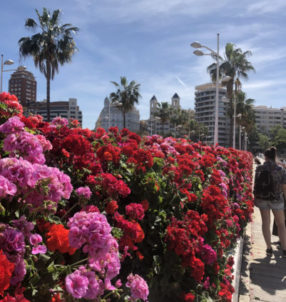
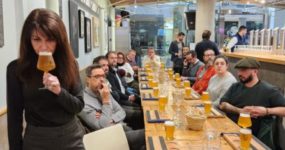

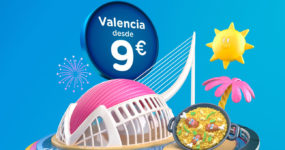
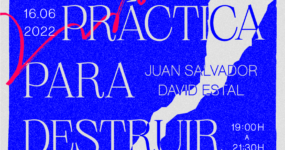

















Leave a comment